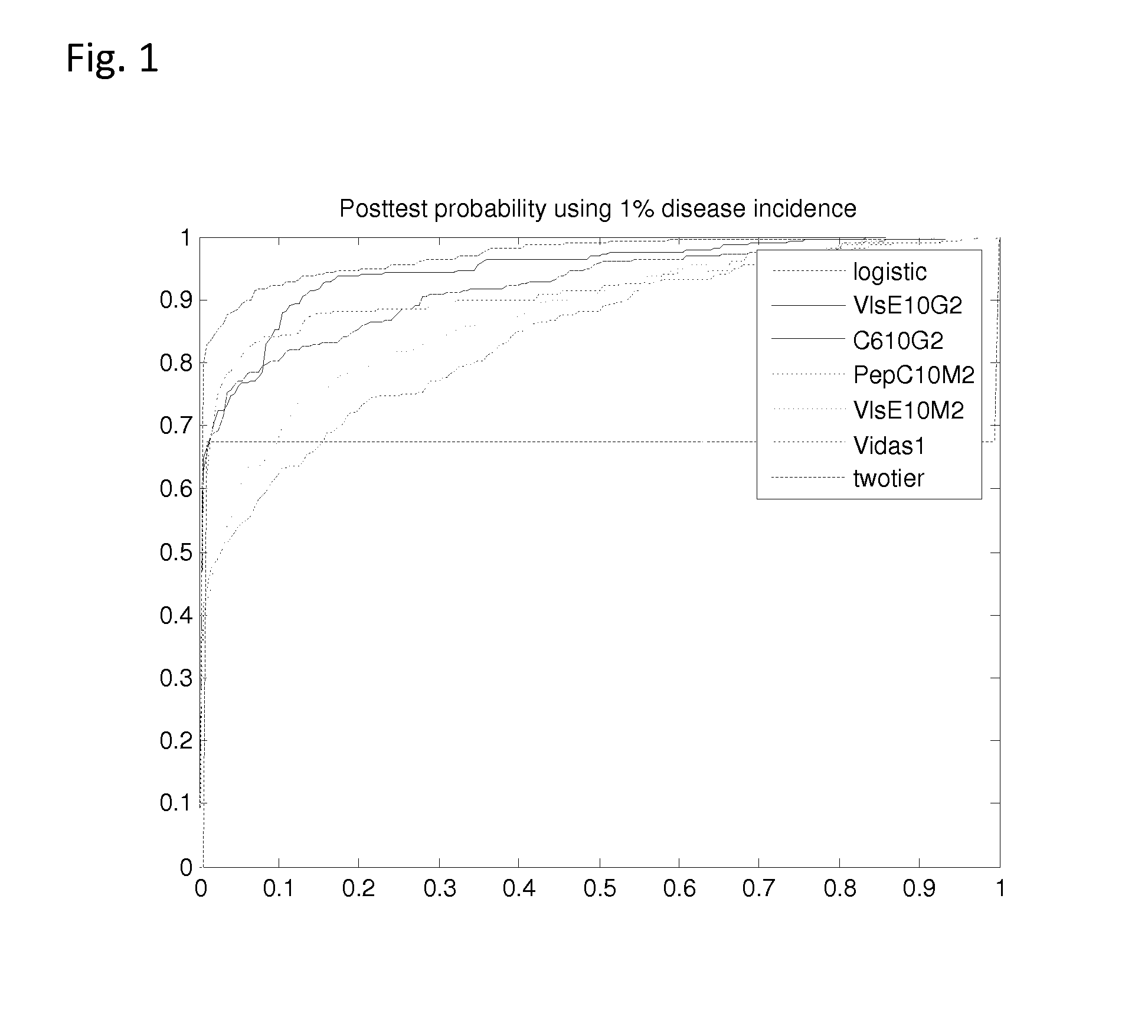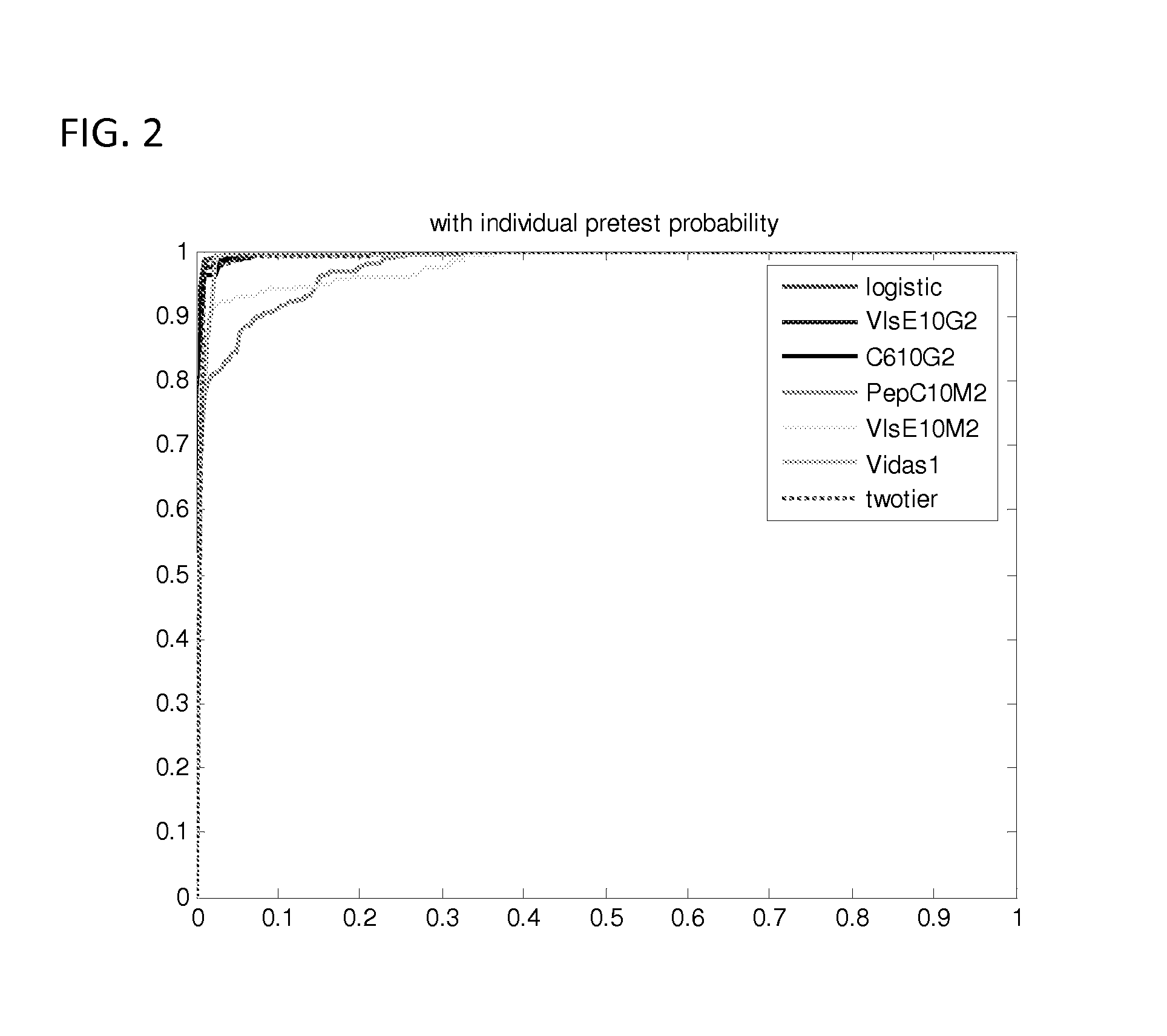Bioinformatic Approach to Disease Diagnosis
a bioinformatics and disease technology, applied in the field of multivariate predictive models, can solve the problems of low sensitivity, low specificity, and high risk of false positives, and achieve the effects of reducing errors, maximizing predictive power, and high specificity
- Summary
- Abstract
- Description
- Claims
- Application Information
AI Technical Summary
Benefits of technology
Problems solved by technology
Method used
Image
Examples
example
[0058] Studies that generated the current predictive models are described below.
[0059] The prior probability of LD is related to the prevalence of LD in the community and was set at 1% (Nichol et al., Ann. Intern. Med., 128(1), 37-48 (1998); Goodman and Sonenshine (eds.), Tick-Borne Diseases of Humans, (ASM Press, Washington, D.C. (2005)). A clinical algorithm to determine the pretest probability of LD, given a patient's clinical signs and symptoms in an endemic area, will be discussed below.
[0060] Partial ROC regression and logistic regression analyses were performed on a CDC database of LD patients (n=280) and controls (n=559). In order to combine multiple diagnostic tests, a linear combination of test results was used to create a score function. In this case the score for each patient was a likelihood ratio (LR) based on their individual test results. The empiric AUC was approximated for the (1−t0) quantile of patients without LD, where t0 represents the maximum acceptable fals...
PUM
| Property | Measurement | Unit |
|---|---|---|
| area | aaaaa | aaaaa |
| weight | aaaaa | aaaaa |
| β | aaaaa | aaaaa |
Abstract
Description
Claims
Application Information
 Login to View More
Login to View More - R&D
- Intellectual Property
- Life Sciences
- Materials
- Tech Scout
- Unparalleled Data Quality
- Higher Quality Content
- 60% Fewer Hallucinations
Browse by: Latest US Patents, China's latest patents, Technical Efficacy Thesaurus, Application Domain, Technology Topic, Popular Technical Reports.
© 2025 PatSnap. All rights reserved.Legal|Privacy policy|Modern Slavery Act Transparency Statement|Sitemap|About US| Contact US: help@patsnap.com



